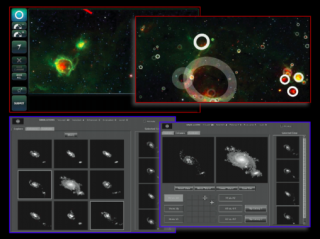 We review the relatively new, internet-enabled, and rapidly-evolving field of citizen science, focusing on research projects in stellar, extragalactic and solar system astronomy that have benefited from the participation of members of the public, often in large numbers. We find these volunteers making contributions to astronomy in a variety of ways: making and analyzing new observations, visually classifying features in images and light curves, exploring models constrained by astronomical datasets, and initiating new scientific enquiries. The most productive citizen astronomy projects involve close collaboration between the professionals and amateurs involved, and occupy scientific niches not easily filled by great observatories or machine learning methods: citizen astronomers are most strongly motivated by being of service to science. In the coming years we expect participation and productivity in citizen astronomy to increase, as survey datasets get larger and citizen science platforms become more efficient. Opportunities include engaging the public in ever more advanced analyses, and facilitating citizen-led enquiry by designing professional user interfaces and analysis tools with citizens in mind.
We review the relatively new, internet-enabled, and rapidly-evolving field of citizen science, focusing on research projects in stellar, extragalactic and solar system astronomy that have benefited from the participation of members of the public, often in large numbers. We find these volunteers making contributions to astronomy in a variety of ways: making and analyzing new observations, visually classifying features in images and light curves, exploring models constrained by astronomical datasets, and initiating new scientific enquiries. The most productive citizen astronomy projects involve close collaboration between the professionals and amateurs involved, and occupy scientific niches not easily filled by great observatories or machine learning methods: citizen astronomers are most strongly motivated by being of service to science. In the coming years we expect participation and productivity in citizen astronomy to increase, as survey datasets get larger and citizen science platforms become more efficient. Opportunities include engaging the public in ever more advanced analyses, and facilitating citizen-led enquiry by designing professional user interfaces and analysis tools with citizens in mind.
Authors: Philip J. Marshall, Chris J. Lintott, Leigh N. Fletcher

